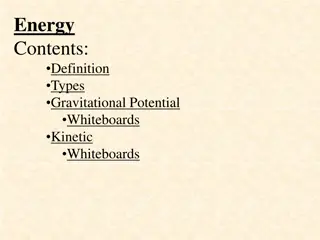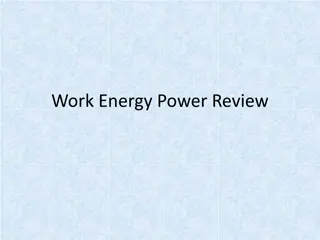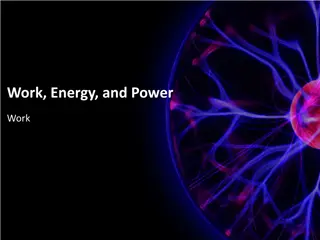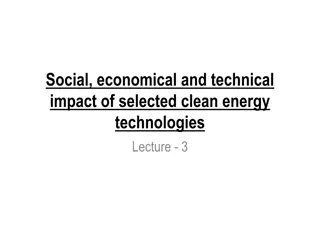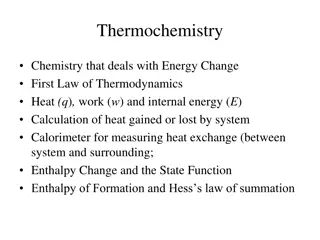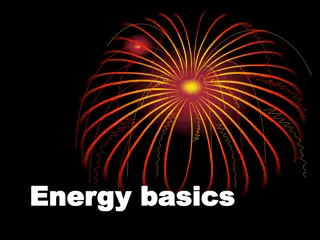
Electric Charges and Energy Systems
Explore scenarios involving electric charges in equilateral triangles, superposition of energy systems, field energy interactions, and capacitor energy variations. Understand concepts and outcomes related to charge configurations and energy changes in different systems.
Uploaded on | 1 Views
Download Presentation

Please find below an Image/Link to download the presentation.
The content on the website is provided AS IS for your information and personal use only. It may not be sold, licensed, or shared on other websites without obtaining consent from the author. If you encounter any issues during the download, it is possible that the publisher has removed the file from their server.
You are allowed to download the files provided on this website for personal or commercial use, subject to the condition that they are used lawfully. All files are the property of their respective owners.
The content on the website is provided AS IS for your information and personal use only. It may not be sold, licensed, or shared on other websites without obtaining consent from the author.
E N D
Presentation Transcript
2.47 Three identical charges +q sit on an equilateral triangle. What would be the final KE of the top charge if you released it (keeping the other two fixed) 2 +q a a a +q +q 2 A) B) 1 4pe0 a 2 q 1 2q 3a 4pe0 2 1 3q a 1 2q C) D) 4pe0 a 4pe0 E) other
2.48 Three identical charges +q sit on an equilateral triangle. What would be the final KE of the top charge if you released all three? 2 +q a a a +q +q 2 A) B) 1 4pe0 a 2 q 1 2q 3a 4pe0 2 1 3q a 1 2q C) D) 4pe0 a 4pe0 E) other
Does system energy superpose? That is, if you have one system of charges with total stored energy W1, and a second charge distribution with W2 if you superpose these charge distributions, is the total energy of the new system simply W1+W2? A) Yes B) No
r Two charges, +q and q, are a distance r apart. As the charges are slowly moved together, the total field energy e t 2 0 E d 2 (Come up with two different reasons for your answer. ) A) increases B) decreases C) remains constant
+Q -Q A parallel-plate capacitor has +Q on one plate, -Q on the other. The plates are isolated so the charge Q cannot change. As the plates are pulled apart, the total electrostatic energy stored in the capacitor A) increases B) decreases C) remains constant. (Come up with two different reasons for your answer. )



